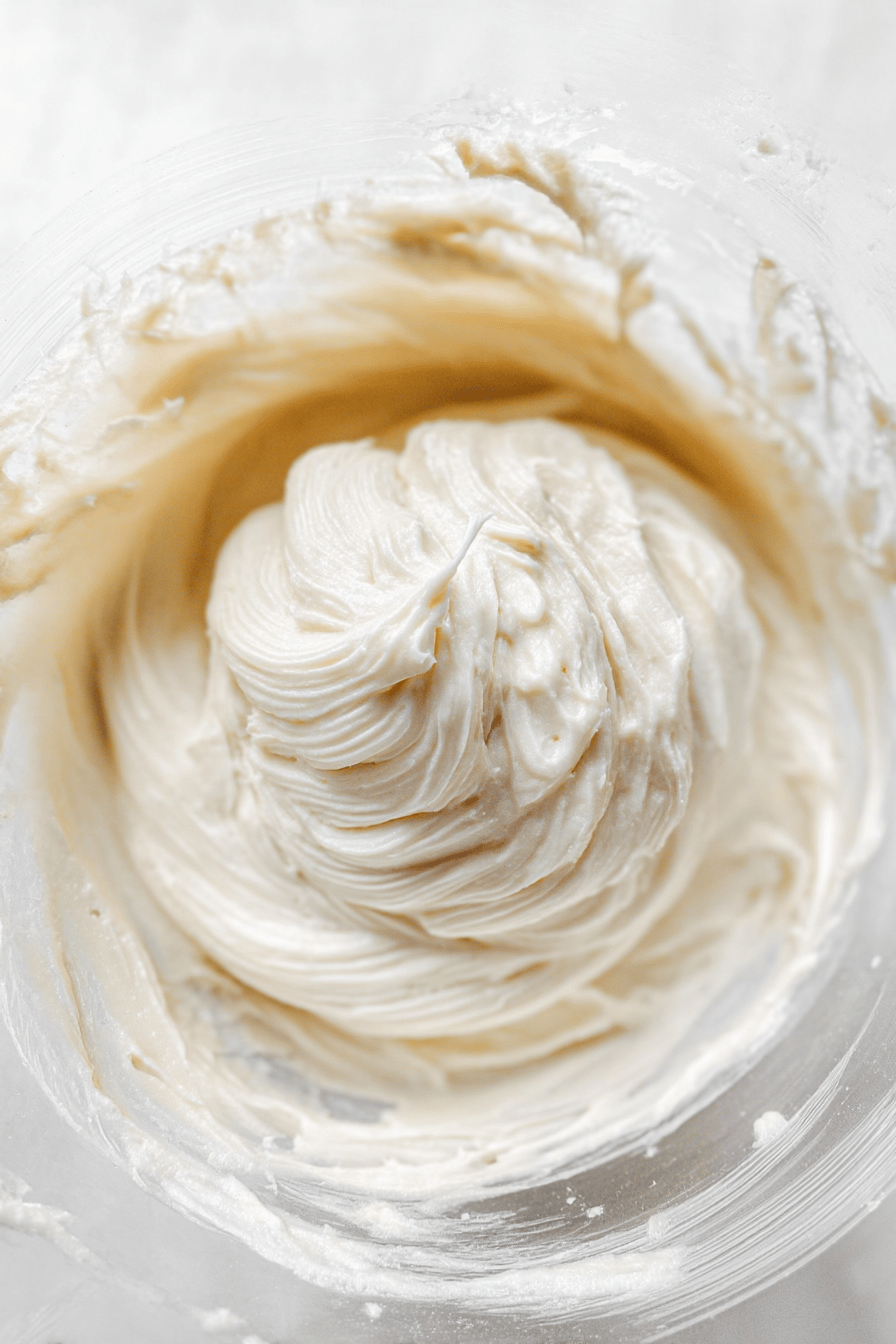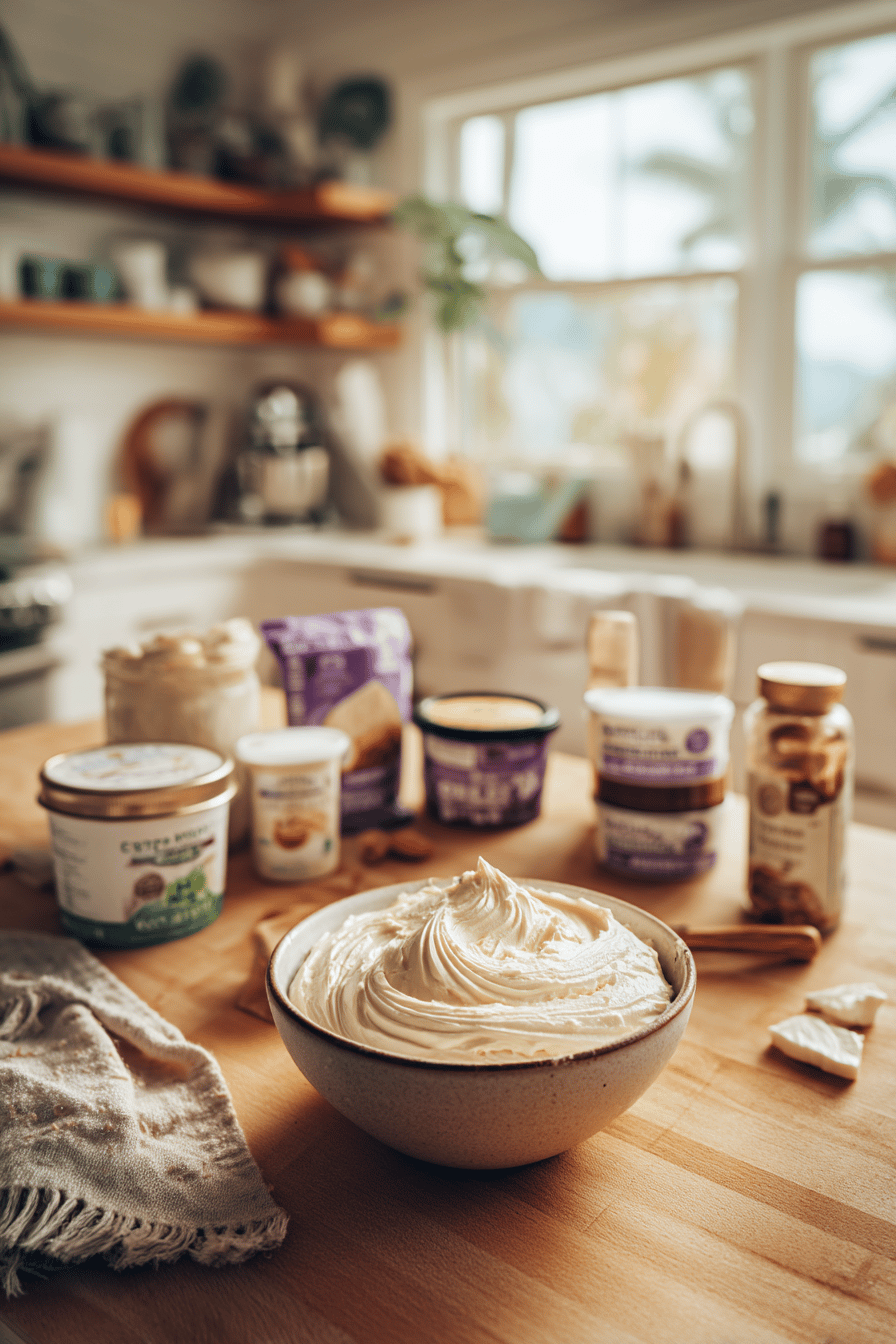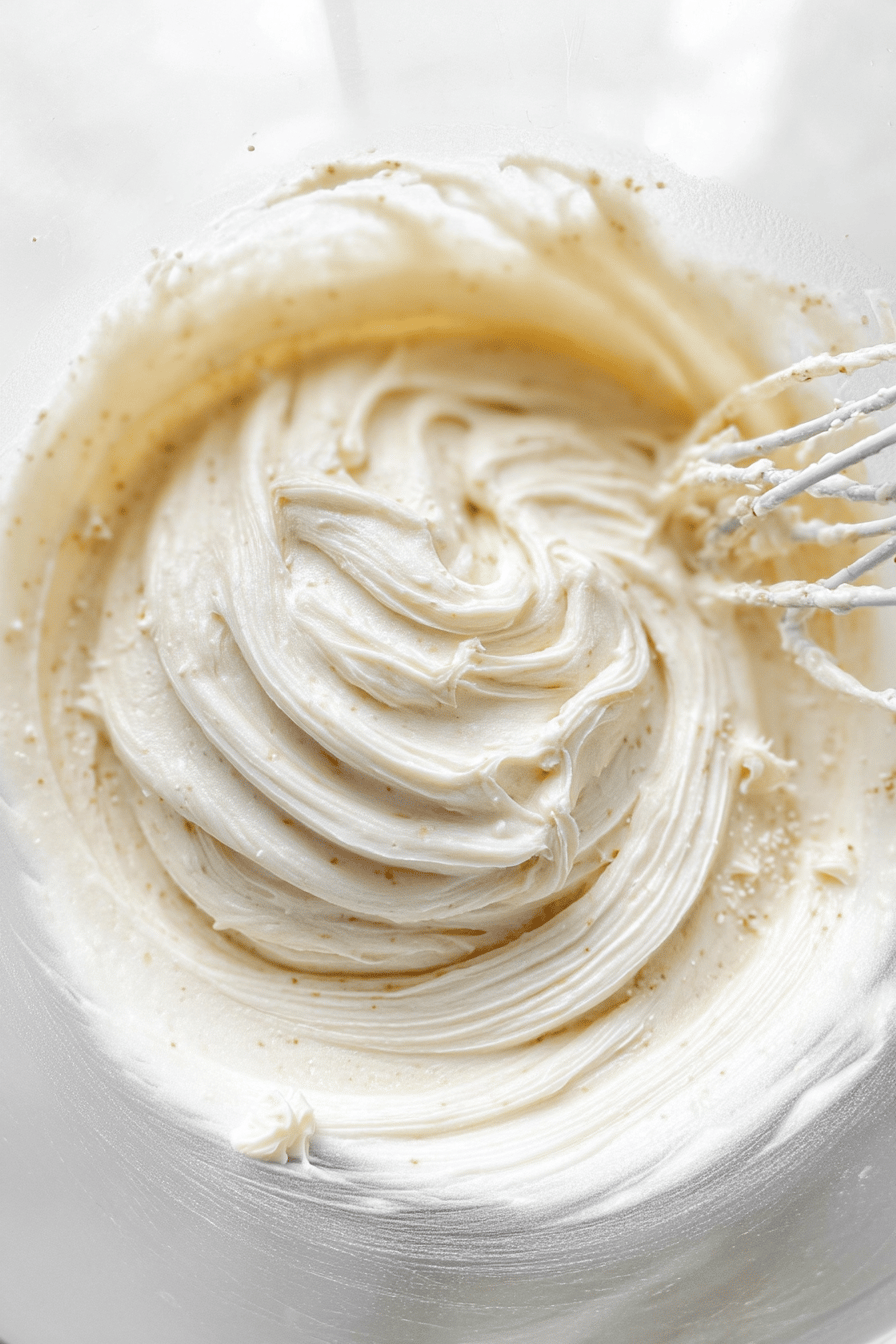Benefits and Advantages of cream cheese frosting
Cream cheese frosting is favored for its smooth texture and rich flavor, making it a perfect complement to many baked goods. One of its main advantages is ease of preparation; it requires minimal ingredients and simple steps, making it accessible even for novice bakers. Additionally, cream cheese frosting offers a balance of sweetness and tanginess unmatched by other frostings. Health-wise, choosing low-fat or reduced-sugar versions can make it a lighter option compared to traditional buttercream, appealing to health-conscious individuals. This frosting stands out because it pairs wonderfully with various flavors, from carrot cake to red velvet, providing versatility. Using synonyms like cream cheese icing or cheese frosting within the text ensures enhanced SEO without affecting readability.
Essential Ingredients for cream cheese frosting
The foundational ingredients for cream cheese frosting include cream cheese, unsalted butter, powdered sugar, and vanilla extract. Cream cheese delivers the signature tangy taste and creamy texture, while butter adds richness. Powdered sugar sweetens the frosting and helps achieve a smooth consistency. Vanilla extract enhances the flavor depth. For vegan options, substitute cream cheese and butter with plant-based alternatives like cashew-based cream cheese and vegan margarine. Gluten-free choices are naturally met as the frosting contains no flour. Low-calorie variants can opt for powdered sugar substitutes or omit butter, but this may affect texture. Including related terms like cheese icing and cream cheese icing helps optimize SEO naturally.

Dietary Substitutions to Customize Your cream cheese frosting
To accommodate dietary preferences and restrictions, various substitutions can be made in cream cheese frosting. For those following a vegan diet, use dairy-free cream cheese alternatives made from nuts or soy, paired with vegan butter or coconut oil to maintain richness. Individuals with lactose intolerance can select lactose-free cream cheese or a combination of cream cheese and yogurt alternatives. Sugar can be replaced with natural sweeteners such as stevia or erythritol for a lower-calorie frosting version, catering to those monitoring sugar intake. Gluten-free needs are typically met naturally, as the basic recipe contains no gluten, but it is essential to verify that all processed ingredients are labeled gluten-free. Additionally, nut-free cream cheese substitutes are available for allergies. These modifications ensure that the frosting retains texture and flavor while addressing health and ethical concerns. Incorporating synonyms such as cheese icing and cream cheese icing enriches the text’s SEO quality while preserving a natural tone.

How to Prepare the Perfect cream cheese frosting: Step-by-Step Guide
First Step: Soften the cream cheese and unsalted butter by leaving them at room temperature for about 30 minutes to achieve a creamy consistency. This step ensures a smooth blend and is essential for all dietary adaptations. Second Step: In a large mixing bowl, combine the softened cream cheese and butter using an electric mixer on medium speed until the mixture is fluffy. Vegan or lactose-free versions follow the same process using their respective alternatives. Third Step: Gradually add powdered sugar while mixing on low speed to prevent sugar dust, increasing speed once fully incorporated. For low-calorie variations, use powdered sugar substitutes accordingly. Fourth Step: Mix in vanilla extract to enhance flavor, adjusting the quantity to personal taste preferences. Fifth Step: Continue beating the frosting until it reaches a smooth, spreadable texture, usually 2-3 minutes. If the frosting is too thick, a splash of non-dairy milk can be added. Sixth Step: Refrigerate for 30 minutes if a firmer consistency is desired, especially before piping or spreading on cakes or cupcakes. This step is helpful for all dietary versions to improve handling. Throughout the preparation, adapting ingredient choices for vegan, gluten-free, or low-sugar needs is straightforward, keeping the focus on creating the perfect cream cheese frosting compatible with various diets and preferences.
Advanced Tips and Variations
For the richest and smoothest cream cheese frosting, make sure all ingredients are at room temperature before mixing. This prevents lumps and gives the frosting an ideal texture. Using a high-quality, full-fat cream cheese greatly enhances the flavor and creaminess.
To add interesting twists, try incorporating zest from lemon or orange for a fresh tangy note, or spices like cinnamon and nutmeg to deepen the flavor profile. Chocolate lovers can blend in melted dark or white chocolate for a luxurious variation.
Vegan cream cheese frostings benefit from using plant-based cream cheese alternatives labeled for quality and minimal additives. To maintain firmness in warmer climates or for extended display, adding a small amount of cornstarch or gelatin helps stabilize the frosting.
For a sweeter natural flavor, experiment with maple syrup or agave nectar, adjusting powdered sugar accordingly. Remember, cream cheese frosting is softer than traditional buttercream, so chilling before piping helps it hold its shape better, though very intricate designs may not be suitable.
How to Store cream cheese frosting: Best Practices
Store cream cheese frosting in an airtight container to maintain freshness and prevent the absorption of fridge odors. Refrigerate the frosting to extend its shelf life up to one week.
Before using refrigerated frosting, allow it to come to room temperature and gently re-beat to restore creaminess and spreadability. For longer storage, freeze the frosting in portions for up to three months. Thaw in the refrigerator overnight and whip lightly before use.
Avoid leaving cream cheese frosting at room temperature for extended periods, especially in warm conditions, as dairy-based frostings spoil quickly. Proper storage keeps the frosting flavorful and smooth whether for traditional, vegan, or low-calorie versions.
| Storage Method | Duration | Key Tips |
|---|---|---|
| Refrigeration | Up to 1 week | Use airtight containers; bring to room temperature and re-beat before use |
| Freezing | Up to 3 months | Freeze in portioned airtight containers; thaw overnight in fridge, re-whip before use |
Nutritional Value of cream cheese frosting
Cream cheese frosting contains most of its calories from fats and sugars. A typical serving size of two tablespoons delivers between 150 and 180 calories, with 9 to 12 grams of fat mainly from cream cheese and butter.
Protein is modest, about 2 grams per serving, and carbohydrates primarily from powdered sugar range from 15 to 20 grams. This frosting also provides small amounts of vitamin A courtesy of the dairy. Diet-conscious bakers can choose reduced-fat cream cheese and sugar substitutes to decrease calories and fat.
Vegan or lactose-free versions have variable nutrition depending on base ingredients such as nuts or soy, often contributing additional unsaturated fats and fiber. Keeping an eye on these values helps balance pleasure with dietary goals.

FAQs: Frequently Asked Questions About cream cheese frosting
Can cream cheese frosting be used for piping decorations on cakes?
Yes, cream cheese frosting can be piped, especially if it is thickened by chilling in the refrigerator for 20–30 minutes before use. Using full-fat brick cream cheese and ensuring the frosting is firm helps it hold its shape better. However, it is softer than traditional buttercream, so avoid very intricate or detailed piping designs, and be cautious about piping in warm environments where the frosting may soften quickly.
How can I stop my cream cheese frosting from being too runny?
To prevent runny frosting, always use an 8-ounce block of full-fat cream cheese and avoid low-fat or tub-style cream cheese spreads. Soften cream cheese and butter to room temperature but don’t let them get overly soft. Adding extra powdered sugar gradually or a small amount of cornstarch (about one tablespoon at a time) can also help thicken the frosting without making it overly sweet.
Is it safe to leave cream cheese frosting out at room temperature?
Cream cheese frosting should not be left at room temperature for more than two hours, especially in warm weather, because it contains dairy and can spoil quickly. For food safety and to keep the frosting firm, it’s best to refrigerate cakes or desserts with cream cheese frosting and remove them shortly before serving.
Can cream cheese frosting be made ahead and stored?
Yes, cream cheese frosting can be made in advance and stored in an airtight container in the refrigerator for up to two weeks. When ready to use, let it sit at room temperature for about 30 minutes, then gently stir or beat it to restore its spreadable consistency. For longer storage, you can freeze cream cheese frosting for up to three months, thaw it in the fridge, and re-whip before use.
What are some popular flavor variations for cream cheese frosting?
You can customize cream cheese frosting by adding flavors like cinnamon (½ teaspoon per 8 oz cream cheese), lemon extract, pumpkin spice, or cocoa powder (about ¾ cup per 16 oz cream cheese) for chocolate frosting. Browning the butter before mixing adds a nutty flavor. Additionally, stirring in freeze-dried fruit powders or fresh fruit purees (with adjustments to sugar) can add delicious fruity notes, but keep in mind puree can thin the frosting.

